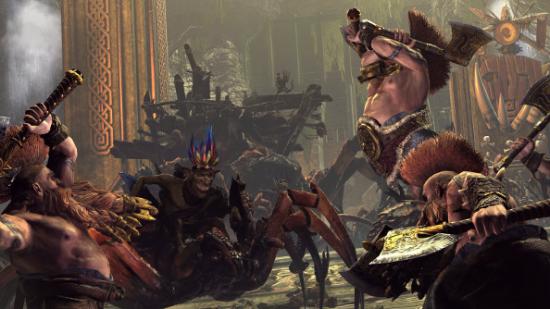What are the Total War: Warhammer system requirements? Which factions can you play? You’ve got questions, friends, and we’ve got more answers than you could fit inside a Troll’s belly. So without any more messing around, here’s everything we know about Creative Assembly’s foray into the world of brutal fantasy.
Will Total War: Warhammer make it onto our list of the best strategy games on PC?
Horrible vampires, the fantastical campaign map, flashy magic – here’s the skinny on the whole lot.
Update 16 May, 2016: We’re a week after launch so we’ve pulled together the latest info from the Old World. Read all about the Bretonnians, plans for free DLC, and a happy surprise – comprehensive modding tools.
Total War: Warhammer system requirements
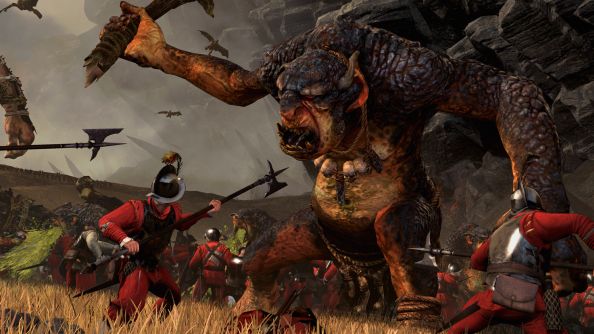
The big question: can you run it? Given the scale, Total War games tend to have fairly high requirements if you want them to look their best and perform well. Attila’s highest settings, for instance, weren’t even designed with contemporary PCs in mind, but rather PCs of the future. In the case of theTotal War: Warhammer system requirements, it looks like Creative Assembly expect it to run on a broad range of machines, but only if you’re willing to make sacrifices.
If you’ve got 3GB of RAM, an Intel Core 2 CPU and an AMD Radeon HD 5770 1024MB or equivalent GPU, then you’ve hit the minimum requirements. Unfortunately that means you’ll be playing everything on low, and will still only get 15-25fps on the campaign map, which is pretty horrible.
To push the graphics settings to high and get around 50fps, you’ll need 8GB of RAM, and Intel Core i5-4570 3.20GHz or equivalent and a GPU like theNVIDIA GeForce GTX 760 2048MB. And if you want the game to look its best and run at over 60fps, you’ll need something like a GTX 980 and an i7-4790K CPU.
If you buy the game now on Steam, it will set you back £39.99/$59.99.
Total War: Warhammer gameplay
To get an idea of what the game’s like, take a gander at our Total War: Warhammer hands-on where we got to command the stalwart Dwarfs against the unrelenting tide of foul Greenskins, underground, no less. And more recently, we took the Vampire Countsfor a spin.
Total War: Warhammer factions
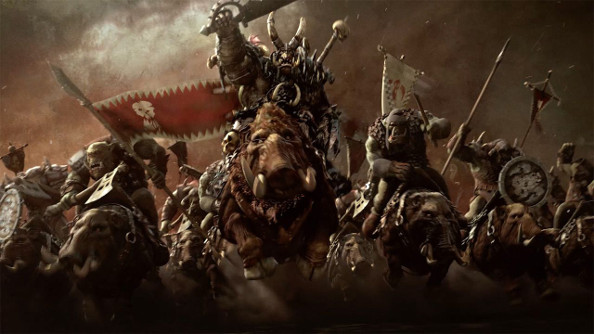
Who can you play as? At launch, four factions will be available in the campaign unless you pre-order and get the Chaos Warriors as well. The other factions are the Empire, the Dwarfs, the Vampire Counts, and the Greenskins. These are not the only factions in the game, however, as minor and AI factions will be present as well.
Empire
The Empire, the only playable human faction at launch, is in a bit of a state. Emperor Karl Franz finds himself with little land to control, and thus must reunite the land of Reikland and beyond if he’s going to take on the likes of the Greenskins and Chaos Warriors. Expect pegasuses, moustaches and bureaucrats.
Dwarfs
The Dwarfs hold grudges. So much so that High King Thorgrim’s Book of Grudges, which lists slights against the Dwarfs, serves a gameplay purpose, essentially giving the Dwarfs quests or tasks – with a focus on revenge – which confer cash rewards or special bonuses. These guys will be spending a good amount of time fighting the Greenskins, who have stolen some of their land.
Vampire Counts
The last faction to be revealed, these magical, zombie-raising villains are a mystery to the other factions. A dangerous one. They aren’t a mystery to us, though, because we recently got to spend some time with them. Hands-on with Total War: Warhammer’s Vampire Counts, the undead army who can’t be routed.
Greenskins
Mostly made up from Orcs and Goblins, the Greenskin faction is messy and aggressive. They like putting spikes on things, and indeed in things. They ride boars, too. What a world! The Greenskins are generally not big fans of anyone, and love a good scrap.
Chaos Warriors
The Chaos Warriors are heavy metal-loving Northmen, corrupted by the dark deities of Chaos. Along with new buildings, tech and Chaos-specific quests, they are also to burn down settlements and set up their own encampments all over the map, a bit like the nomadic tribes from Total War: Attila.
Bretonnia
While the Bretonnian faction won’t be playable in the main campaign, you will be able to take charge of them in custom battles against the AI or dastardly human opponents. They’re the chivalric type, relying on shattering charges and their iconic Pegasus Knights.
Total War: Warhammer Lords and Heroes
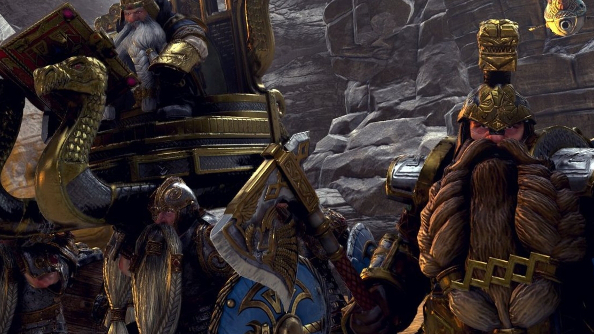
Warhammer’s Lords and Heroes are what Creative Assembly are calling Generals and Agents. The former is the head of an army or fleet, but can also oversee settlements, while the latter can spy, assassinate and sabotage. There are, however, a few significant differences between them and their historical Total War counterparts.
Lords, for instance, are a much bigger deal on the battlefield. Rather than just providing statistical bonuses or rallying the troops, Lords are powerful warriors and spellcasters that can help turn the tide of battle thanks to special abilities, spells and items that they can gain through combat and quests.
Heroes, while doing all the things that Agents in other Total War games can do, can also participate in battles when attached to an army. Some are magical, while others are melee focused, and like Lords can use abilities and spells in the middle of a fight.
Finally there are the Legendary Lords. These units are Big Deals™. Legendary Lords are leaders with tremendous power, all of them with names you might recognise from Warhammer lore. These leaders have an extra skill branch along with the strategic, tactical and battle branches that regular Lords have access to. This special branch is unique to them, and skill points spent here unlock personal quests.
Total War: Warhammer quests and gear
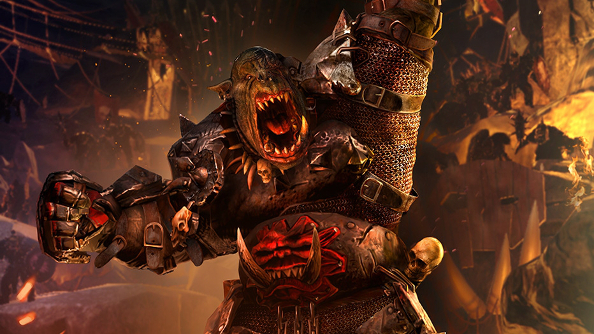
Through personal quests, your leaders will be able to net themselves some of the fanciest items from the tabletop game – objects full of history and power. Getting them requires a bit of effort, however. Once you’ve spent your skill points to unlock the quest, you’ll need to earn these most prized rewards through bespoke battles and tasks. And we’re not just talking about a nice hat or a sword that looks intimidating; quest rewards give their wielders brand new abilities to make them even more deadly on the battlefield.
Legendary Lords don’t get all the fun, though, as they and normal Lords and Heroes can equip up to six magical items from armour to arcane talismans. Like the quest items, these are drawn from the Warhammer rulebook and can be stolen, found or won in battle.
Mounts can also be acquired through quests, and also just through the skill tree. These run the gahmut from flying beasts like wyverns to stalwart warhorses, perfect for a Lord of the Empire. Your choice of mount is important, as it will have a big impact on the battlefield.
Total War: Warhammer battles
It’s not called Total Chill: Peacehammer. Warhammer’s battles, on the surface, look a lot like you’d expect from a Total War game: the battle lines, the rock, paper, scissors fights, the myriad stats that make up each unit from their charge rating to their morale. It’s familiar. But the shift from history to fantasy brings with it some gargantuan additions to the formula that promise to make Warhammer’s battles significantly different from its predecessors.
There’s flying, for instance. From the Dwarf gyrocopters to Orcs riding wyverns, there are a lot of aerial options, though most of them appear to be high-tier units and thus won’t be available from the get-go. These units can be used in multiple ways. A spellcaster riding a dragon might stay out of harm’s way and buff their allies, speeding off to wherever they are needed. A more aggressive aerial unit, however, might instead fly behind enemy lines, raining death from above or swooping down to munch on foes.
Meanwhile, here’s a look at a very colourful new form of devastation:
The introduction of magic is poised to have an even greater impact. Spells and magical abilities range from spreading terror throughout enemy ranks to summoning giant swirling vortexes of death, and they’re powerful. Not so powerful, however, that one spell can destroy an entire unit. Creative Assembly have emphasised that magic isn’t a big win button, and indeed can be as risky as it is rewarding, since spells can also harm your own units, and it’s possible to miscast, damaging the spellcaster.
Sieges
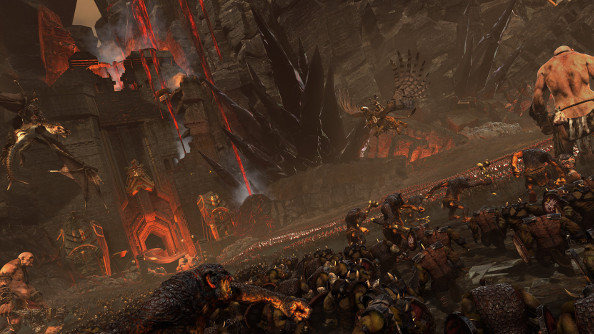
With flying units, powerful magic and crazy siege engines that would have never seen in the historical games, sieges are a little bit different this time around. There’s been a change in design philosophy, you see, and Creative Assembly now wants players to spend less time outside the walls simply trying to hit them, and more time fighting in the streets and on the battlements.
There have been AI changes to facilitate this, and these go beyond sieges. “In historical games, unit classification was pretty straightforward,” AI programmer Andre Arsenault explained at GDC. “We had sword infantry, spear infantry, missile units, cavalry and artillary. It’s a nice and simple classification system. So as a result, the AI succumbed to the temptation of making behavioural decisions based on the type of the unit. But in Warhammer we have all of those things plus [fantasy-style units]. At first those might just seem like new unit categories, but the units themselves within those categories can have very different strengths and weaknesses, especially with the individual hero units. As a result, we needed a better way to describe each unit’s role on the battlefield to the AI.”
So now the AI isn’t just concerned with what type of unit it is, but what it can do. Would it be better at flanking or breaking down gates or charging at enemies? The AI can also decide to make multiple attempts at getting into the soft juicy centre of the city. Instead of just focusing on hammering at the walls, another group might break off and do something different, while still attempting to get past or over the walls.
Total War: Warhammer campaign map
Warhammer’s campaign map makes the gorgeous maps from previous games look positively boring. Medieval cities, stalwart Dwarf strongholds full of imposing statues, Chaos corrupted wastelands, hideous Orc war camps – it’s a world full of visually arresting locations, both ugly and beautiful. And it’s a changing world, as well.
As the Chaos Warriors spread their influence, the land around them reacts to their evil, while Dwarf fortresses, once majestic, can be transformed into dirty Orc settlements once the invaders do a spot of redecoration. Other factions of Orcs and humans and Dwarfs and so on also go about their business on the map as well, with their own personalities and grudges. They can be be brought into the fold through diplomacy and war, creating a race-wide coalition.
It’s not just the surface that you have to worry about, either. Dwarfs and Goblins live underground or inside mountains, so there’s a whole other realm to consider. That means new battle locations, too, as well as units that are better suited to brawling underground.
Total War: Warhammer mods
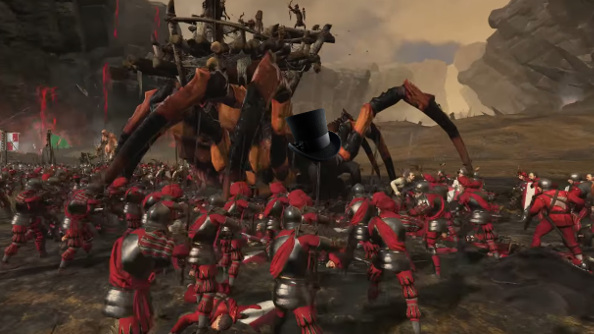
Despite an initial announcement to the contrary, it’s become clear thatTotal War: Warhammer will have full mod and Steam Workshop support at launch. Creative Assembly have expanded on the Assembly Kit seen in Rome 2 and Attila, providing a database editor for fiddling with armies, start positions, units and the like. They also plan to add further functionality, battle map editing included, before the end of the year.
What’s more, a couple of familiar community faces, Magnar and Dresden, will release launch mods. They’re working on customisable lord starting positions and altered race settlement rules, respectively.
And that’s everything we know! For now. Keep checking back as we update this big list.
